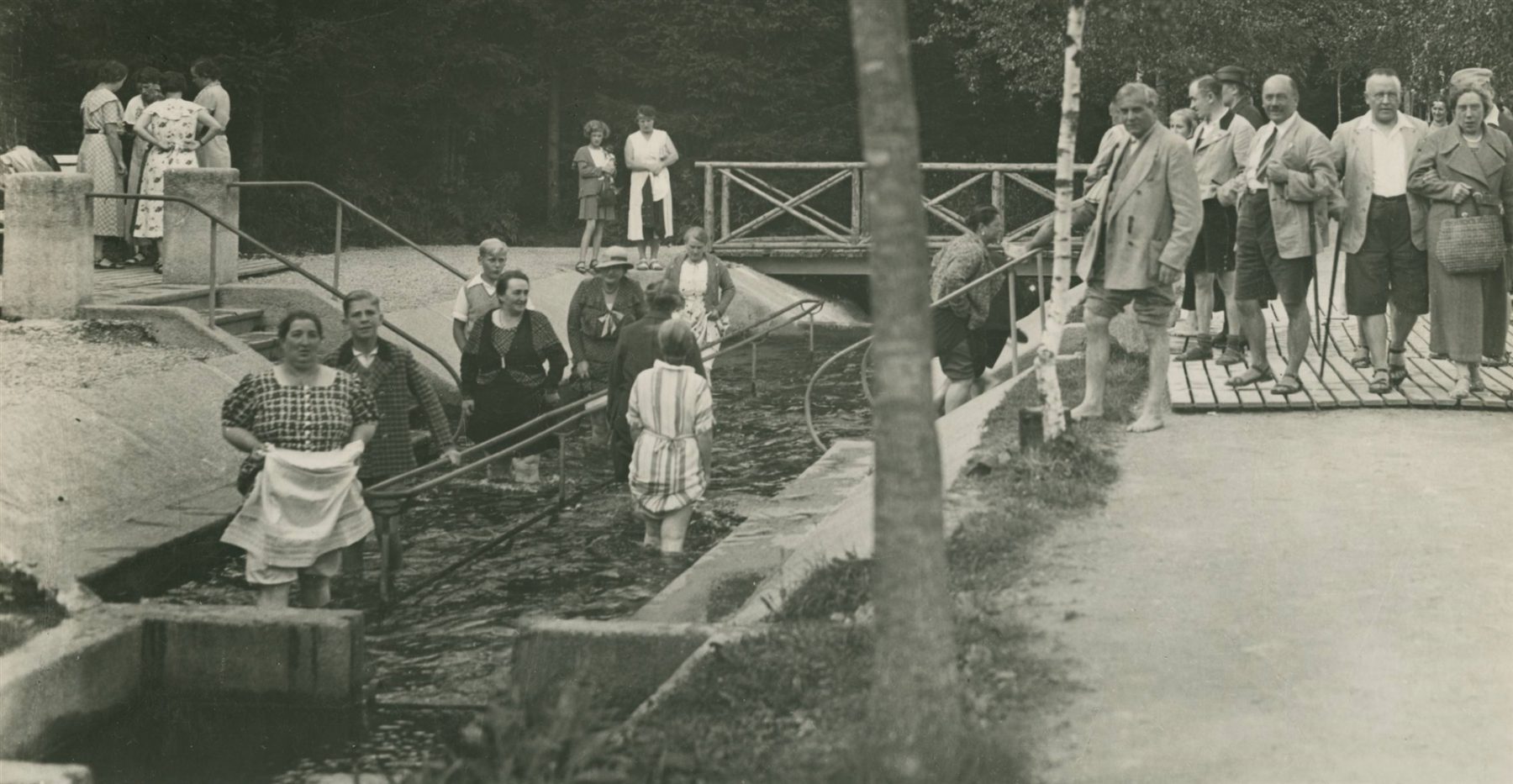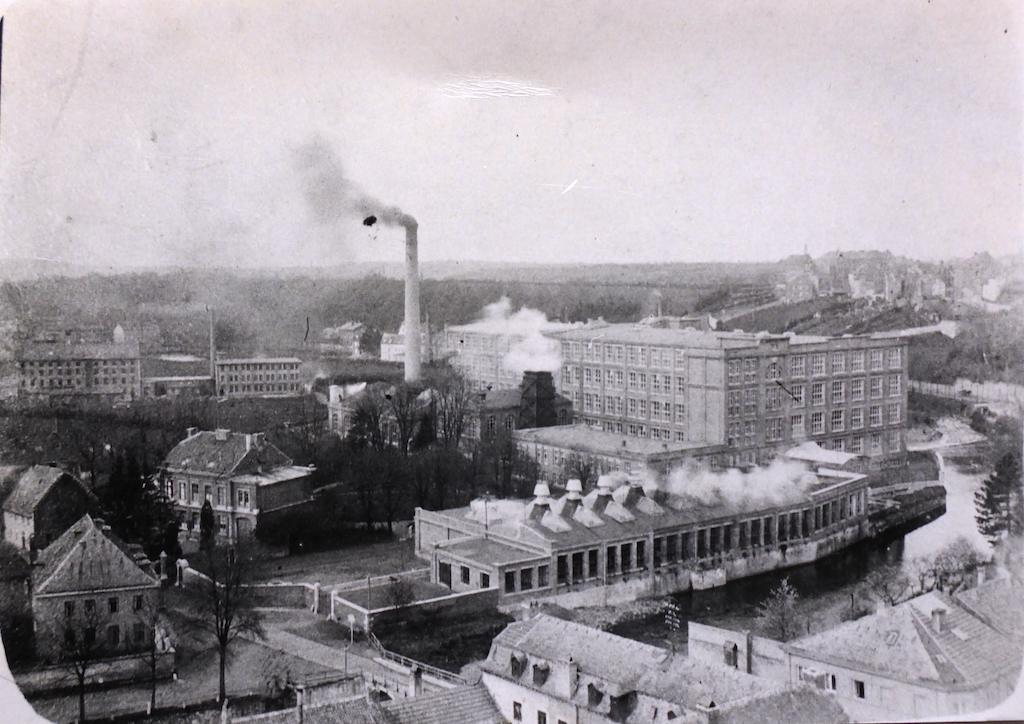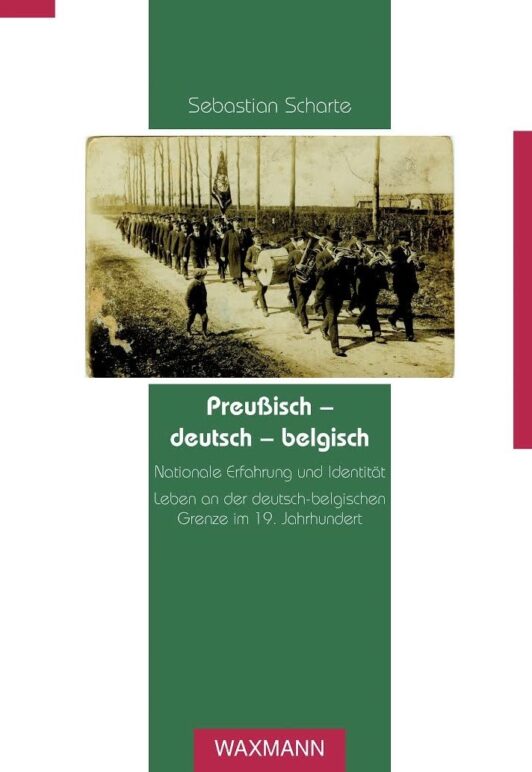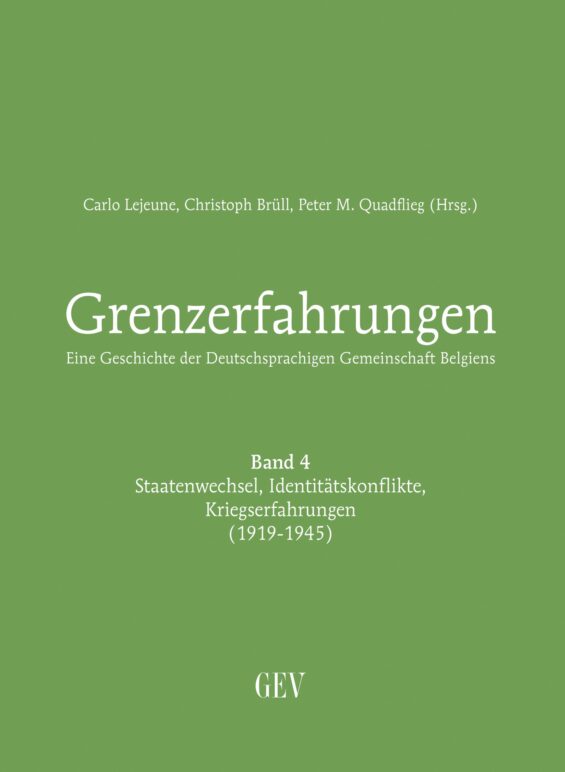-
The ways in which the world worked in 1900 were very different form the way it did in 1800, a time when many of the foundations for Europe’s prosperity were laid: Trade, commerce, industry, research, and education all steered in new directions. The modern nation states came into being, and with them, the feeling of being part of such a nation among the population. Virtues such as ‘diligence’ and ‘reliability’ at work also originated in this period. Mobility rose to unprecedented levels, and the age of mass communication began. In East Belgium, the standard German language did not become established until this century.
The Congress of Vienna (1814/1815) drew new, arbitrary borders across Europe. The Rhineland became part of Prussia, of which three newly formed administrative units became part of the western border: the districts of Eupen, Malmedy, and Sankt Vith. They were subordinate to the administrative district of Aachen, which was part of the Prussian Rhine Province. In 1821, the district of Sankt Vith was dissolved and integrated into the district of Malmedy.
The new borders were drawn according to the logic of the great powers. The idea of asking the population for their opinion simply did not occur to anyone: in and around the town of Malmedy, which now became part of Prussia, were around 10,000 citizens whose mother tongue was the Walloon language. In addition, Neutral Moresnet, later Kelmis, was created in 1815. Because of its extensive calamine deposits, the great powers could not agree on who should receive the 3.4-square-kilometre area of Neutral-Moresnet (later Kelmis), and hence it remained a stateless, neutral territory until 1919.
In the districts of Eupen and Malmedy, Prussia was treated with suspicion, just like in the Rhineland as a whole: The Catholic-conservative majority population was ruled by a state in which the royal family, civil servants, and military were Protestants. From today’s perspective, the basic attitude is described as ‘reserved, yet not actively hostile’. The writer Clara Viebig (1860-1952) described the clash of these different worlds in numerous novels in a very vivid way. These were published mainly at the beginning of the 20th century. The settings were often in the German, and now Belgian Eifel.
Modern nation states emerged against this background. They spread nationalism, but also took on more and more tasks that facilitated the life and coexistence of the citizens.
Even in the 19th century, the differences in development between the north, the Eupen region, and the south, today’s Belgian Eifel, were huge. Eupen and Kelmis in particular experienced strong thrusts in their development, as was typical of the times. After 1815, due to the newly drawn borders, the cloth manufacturers of Eupen could were forced to pay high customs duties on their old sales. Conversely, they could only compete to a limited extent on the new markets. Crises therefore occurred time and again. Mechanisation led to mass poverty among the unskilled textile workers in Eupen: in 1821, rebellious workers swing rioted the first mechanical cloth shearing machine before it went into operation. This swing riot followed the example of English uprisings that began in 1811. Social conflicts characterised the century in the Weser town. The founding of workers’ associations and trade unions, the establishment of political parties and associations, and the spread of the socialist worldview and Christian social teaching marked the conflicts in Eupen.
In the stateless curiosity of Neutral-Moresnet, the rich deposits of calamine were mined by the Vieille Montagne company, which in the 19th century evolved into a modern, globally active corporation based in Paris. The mines in Kelmis were largely exhausted by the 1860s. Until 1919, the mayor and the top management of the company administered the town mostly autocratically.
Today’s Belgian Eifel experienced the connection to the modern world with a longer delay. The best example is the small town of Sankt Vith. In 1811, it had as little as 735 inhabitants, but by 1914 this number had risen to 2,700. One of the reasons is that in 1889, the so-called Vennbahn was completed, a railway line connecting Aachen and Troisvierges/Ulflingen (Luxembourg). The Eifel town turned into a railway junction. Before 1914, almost 800 workers were employed here. The railway gave the population of the Eifel more mobility, making it easier to sell their agricultural products and buy new goods, which had previously been difficult to acquire. Roads were gradually extended throughout the region, and agricultural associations and cooperatives promoted progress.
At the same time, the districts of Eupen and Malmedy experienced how the Prussian state, and from 1871, the German Empire, turned into a nation state. The nation became a decisive feature of identity, and the state expanded its fields of responsibility more and more, as exemplified by the introduction of compulsory education in 1825.
The turn towards the nation is illustrated by several examples. On the one hand, the German military was present locally through its troops in Malmedy and the construction of the military training camp in Elsenborn (since 1894). On the other hand, military conflicts (such as the wars of unification in 1864, 1866 and 1870/1871) fostered German patriotism among the population. Prussian and German administrative officials, teachers, priests, and instructors in the military enforced the use of the standard German in their respective fields. Standard German thus acquired the status of a national language, competing with the German dialects of the region. For the town of Malmedy and Prussian Wallonia with its approximately 10,000 Walloon-speaking citizens, the question of the vernacular or national language played a pivotal role, particularly during the ‘Kulturkampf’ (1871-1878). While Prussia and the German Empire had largely tolerated the minority language until then, the Prussians now increasingly imposed the German national language.
However, the 19th century was not only a century of modernity. The prevalence of death is mirrored in high infant mortality rates and low life expectancy. Medical care was inadequate, even though several religious orders built numerous infirmaries and simple hospitals in the second half of the 19th century. The educational backwardness of the rural regions and the urban working class remained great despite the introduction of compulsory education in 1825. Numerous natural disasters (1816-1817, 1845-1846 and 1882-1883) led to famines. The lack of prospects and poverty caused large waves of emigration from what is now the Belgian Eifel to America and to the industrial areas on the Ruhr and Meuse.
The German-Belgian border area of the time was a space for both encounters and conflict in the long 19th century. Border crossings were commonplace. Even after 1815, historically developed relationships continued to exist across the new state borders. But in cross-border contacts, people increasingly experienced their fellow citizens from the neighbouring country as representatives of a nation state, the embodiments of which were a (standardised) language, a national anthem, and a flag.
With the German invasion of Belgium on 4 August 1914, the war became real on the ground for the first time, propagated as a military-national conflict. Now, the borders were closed and remained an obstacle in everyday life until the 1970s – especially for the border population.
In historiography, East Belgium has long been seen as a border region from the perspective of the centres. In this national-historical perspective, the sphere of action of the nation state stopped at the borders. In this logic, a border region was a peripheral region. In more recent research, historians tend to interpret this space as a transitional region at the borders, where different influences meet. They lead to a particular richness and symbiotic effects that do not occur in this form at the centres. A good example is the history of the workers’ movement in the industrial town of Eupen. It combines a cross-border protest culture with influences from England, the Rhineland, Belgium, and the Netherlands.
All this illustrates how the 19th century laid the foundations for our modern life. Part of the population was open to the innovations and actively helped shape them. Others were fearful and reserved and bore the changes with a passive attitude. How could the nation state adapt to the demands of the present so that it may provide an answer to contemporary challenges? How open and modern should our society be in the future?
-
Year of hardship
Bad harvests, emigration, epidemics, typhoid
Neutral Moresnet
The Aachen border treaty turns the area around the village of Morsenet into a neutral territory between Prussia and the Netherlands.
Compulsory education
Introduction of compulsory education in Prussia
Construction of school buildings
Year of hardship
Bad harvests, emigration, epidemics, typhus
Relief funds and state support
Establishment of cooperative relief funds, state support for wasteland cultivation and afforestation of communal lands, promotion of breeding in livestock farming.
Prussian ‘Kulturkampf’
Founding of the butter association
Foundation of the ‘Butterverein’ (butter association) by headmaster Peter Cremer in Emmels
Year of hardship
Bad harvests, emigration, epidemics, typhus
Eifel fund
Establishment of the ‘Eifel Fund’: improvement of the soil, planting of fruit trees and hedges, construction of water pipes.
Vennbahn
Construction of the Vennbahn Aachen-Ulflingen, and Prüm
Hospital Saint Vith
Foundation of the Saint Josef Hospital in Saint Vith (Augustines)
Opening of the Eupen-Raeren railway line
Foundation of district savings banks
Foundation of the Malmedy District Savings Bank (Kreissparkasse) with branches in Sankt Vith, Bütgenbach, Büllingen, Amel, Reuland, Manderfeld, Waimes, and Weywertz
Hospital Bütgenbach
Foundation of St. Joseph’s House in Bütgenbach (Vincentian nuns)
Establishment of Kneipp Institute Eupen
First trade union in Eupen
‘Kleinbahn’ (TN: small, tertiary) railway connection Dolhain – Eupen
Teachers’ salaries unified and codified across Prussia
First dairy in Büllingen
Construction of water pipes
Opening of the slaughterhouse in Eupen
Opening of the worsted mill in Eupen
Tram in Eupen
Opening of the Eupen-Aachen tramway
Introduction of electricity
Cable factory in Eupen
War railways
First World War
First World War: 1848 dead in East Belgium
-
-
![Scharte]() Sebastian Scharte
Sebastian SchartePreußisch – deutsch - belgisch: Nationale Erfahrung und Identität: Leben an der deutsch-belgischen Grenze im 19. Jahrhundert.
Beiträge zur Volkskultur in Nordwestdeutschland, vol. 115, Münster, Munich, Berlin 2010.
-
![grenzerfahrungen-band3]() Carlo Lejeune (ed.)
Carlo Lejeune (ed.)Grenzerfahrungen. Eine Geschichte der Deutschsprachigen Gemeinschaft Belgiens.
vol. 3: Code Civil, beschleunigte Moderne und Dynamiken des Beharrens (1794-1919), Eupen 2016.
-
![grenzerfahrungen-band4]() Carlo Lejeune, Christoph Brüll, Peter m. Quadflieg (eds.)
Carlo Lejeune, Christoph Brüll, Peter m. Quadflieg (eds.)Grenzerfahrungen. Eine Geschichte der Deutschsprachigen Gemeinschaft Belgiens.
vol. 4: Staatenwechsel, Identitätskonflikte, Kriegserfahrungen (1919-1945), Eupen 2018.
-

1815-1914
Prussian period
For many, the 19th century marked the beginnings of modernity. Why does anyone today feel Belgian, German, Dutch or Luxembourgish? What is the significance of other collective identities, such as East Belgian, Eupen, or Eifel? Why do borders persist in our minds even though we are citizens of the European Union, for example? Many populist parties are calling for the reintroduction of border controls in Europe. What consequences would this have for us? In the following, we will show how collective identity propositions and borders have developed and changed during the 19th century and have penetrated everyday life in such a way that they sometimes still persist (if unconsciously) even today.






